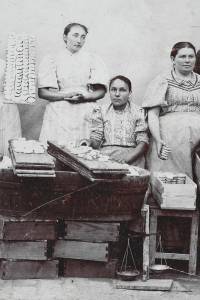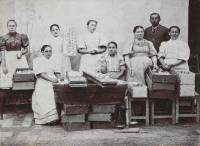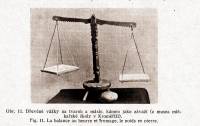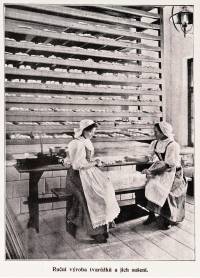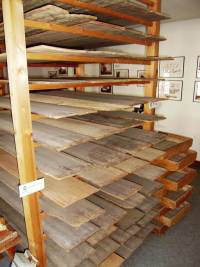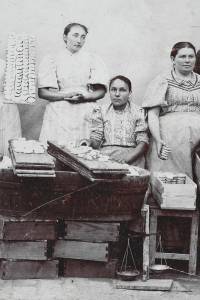Shape of the future ripened tvaruzek was made of the kneaded, food treaded or milled curd in several ways, which received their names by the chosen technique and mostly by the sounds accompanying the process. Flattening is the oldest technique which was preserved by the minor producers till the first decades of the 20th century. The cheese producer or its helpers (mostly women, i.e. cheese shapers) made a ball from a piece of curd and then, by flattening it between their palms, created future shape of the cheese; the cheese shapers then run the curd piece like a wheel on the flat surface of the shingles to round its edges perfectly.
Manual flattening was very dependent on accurate estimate of the curd quantity: the curd cheese size smaller than the usual ordered one (cheese was not sold to the customers on weight, but on “threescore”, i.e. 60 pieces) was claimed by the customer, a higher dosage would harm the producer. Therefore simple, two-armed and mostly wooden scales were permanently the integral part of the cheese shaper workplace. The experienced cheese shapers always weighed the first piece of the threescore, i.e. of 60 pieces, but the other cheese shapers used the scale more frequently.
Larger producers used the more experienced cheese shapers for preparation of the dose - the amount of curd for one curd cheese – for the other cheese shapers. Large curd cheese factories employed even more than ten cheese shapers and their position in the process of production was based on their skill and experience. „It is reported that a good cheese shaper produced 50 – 70 threescore per day and the best ones – up to 100 threescore – i.e. 6,000 curd cheese pieces. There is a nice saying based on performance of these persons ”.. you do not need any machine, you have … “ (and a name of a good cheese shaper followed). If the cheese shapers worked in the dairy, where the workers were responsible for the whole production, they flattened 25-35 threescore per day and their daily salary was ca 2K 40h. At the same time, around 1900, flattening was mainly done as a piecework and the cheese shaper received one kreutzer, i.e. 2 hellers, for one threescore. The cheese shapers usually worked in pairs, but each cheese shaper placed her products (for control) on her own “shingles” and into her section of the stand with shelves. It remained the unwritten law that the cheese shapers had to re-flatten the defective pieces. The shingles - planed boards with dimensions of typically 120 to 130 x 28 and a thickness of ca 1 cm, sometimes grooved - belonged to the operation of shaping until the beginning of the 21st century. jeden krejcar, tedy 2 haléře. Pleskačky pracovaly obvykle ve dvojicích, ale každá si ukládala kvůli kontrole výrobky zvlášť na své “šindele„ a do svého „oddílu“ v darech. Zůstávalo nepsaným zákonem, že při nedodržení velikosti musely pleskačky vadné kusy znovu upleskat. Šindele, nehoblované nebo drážkované desky o rozměrech obvykle 120 - 130 x 28 a o síle kolem 1 cm, někdy drážkované, patřily k formování až do počátku 21. století.
